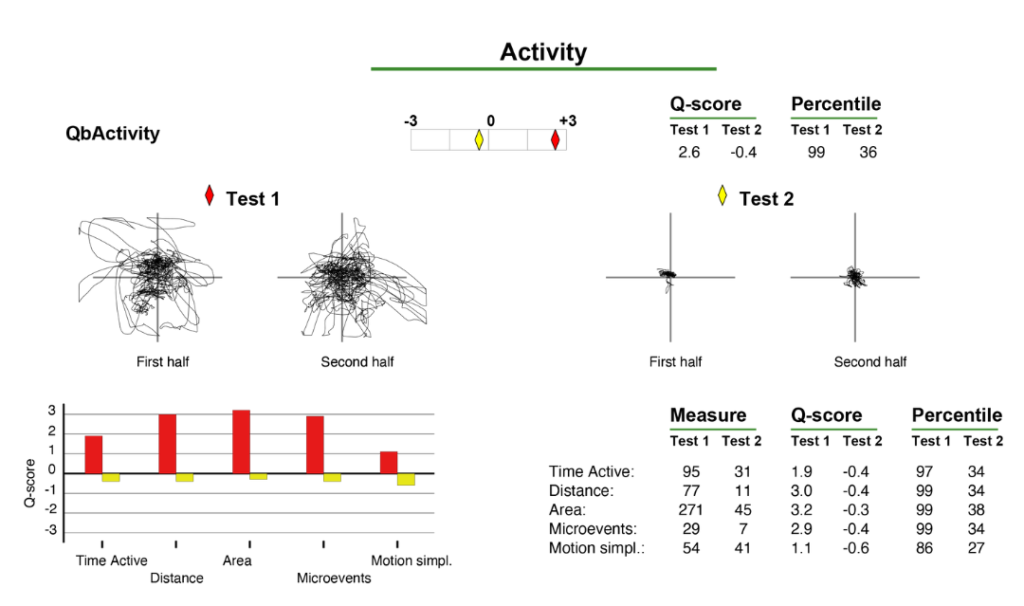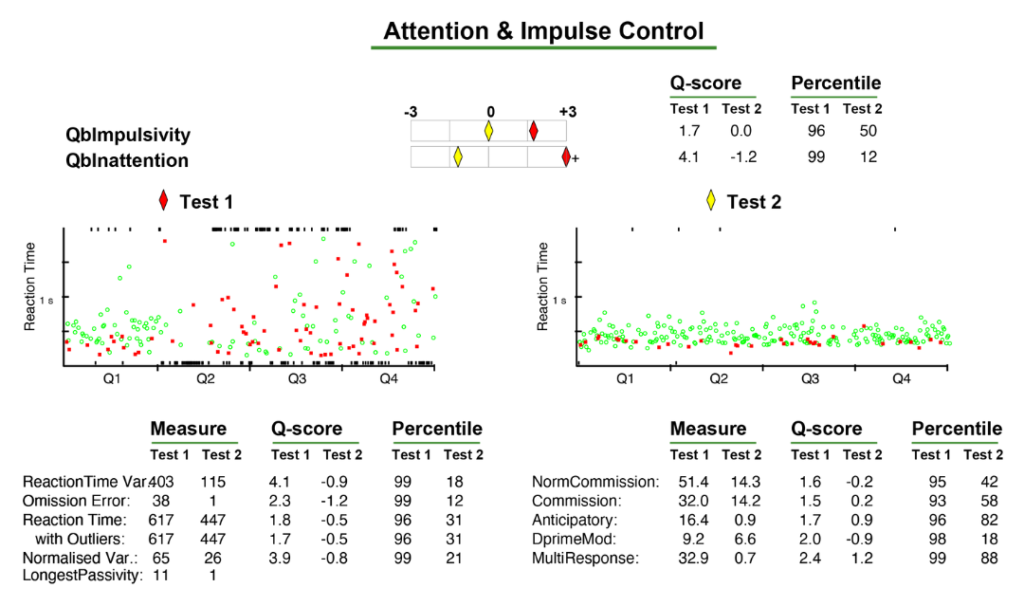When clinicians talk through the diagnostic results for an evaluation, people with ADHD may get overwhelmed easily and have distractibility levels higher than those of neurotypicals. This is why clinicians, patients, and their family members need clear reports.
The results from objective ADHD tests like QbTest and QbCheck are presented in clear reports, showing all three core symptom areas, both visually and statistically, which makes it easier for both a patient and clinician to understand a diagnosis.
Using visual ADHD reports to open communication
When people receive an ADHD diagnosis, they may feel a range of emotions. Research shows that adding QbTest to an ADHD assessment helps patients better understand their symptoms. The visual representation of their symptoms shown as graphs and images on the reports helps patients see their symptoms presented clearly.
Patients show higher levels of satisfaction with their care when they participate in decisions and have increased knowledge about their condition. They feel less overwhelmed and confused when a diagnosis is explained in detail. The QbTest patient report shows user results against age and sex at birth matched normative data. This can help patients and their families can see what behaviours are expected from someone of the same age and sex at birth without ADHD and compare it, visually, with the patients’ own behaviours.
Using data-driven insights to communicate
When healthcare professionals have access to data from QbTest, they can make better informed diagnostic decisions and improve rapport with patients. Patients with ADHD may struggle with articulating their experiences, emotions, and challenges. Visual cues help people with ADHD process information quicker than usual and remember important details more efficiently.
General strategies to adopt to enhance communication with patients in ADHD care
Clarity and brevity
Keep information as clear and to the point as possible. Avoid complex, lengthy explanations involving medical jargon that might overwhelm the patient.
Practice active listening and encourage questions
Nodding, summarising, and validating patient inquiries are all ways to demonstrate empathy and understanding, helping build a good rapport with the patient.
Use structured communication
Bullet points, visual aids, and step-by-step explanations reinforce understanding and retention of information. QbTest for ADHD diagnosis and treatment helps improve patient dialogue through easy to interpret reports.
Establish routines
When you find a communication structure that works, stick to it, and maintain consistency. An established sense of routine helps relieve anxiety and improves receptiveness to communicate.
Communication and ADHD treatment optimisation
Even after a diagnosis, having easy-to-interpret reports helps treatment optimisation and medication management. You can make use of our clinical support calls to identify minute changes in patients’ symptoms. This goes a long way in medication management. You will be able to assess if a patient’s dosage of medication needs to be changed, as well as compare the effects of two or more medications. Patients too can find great benefit in this as they can now make informed decisions about their care.
The report below shows patient results off medication compared to on optimized dose. Such retest reports can be useful so patients and families can visually see the difference treatment might be making.


